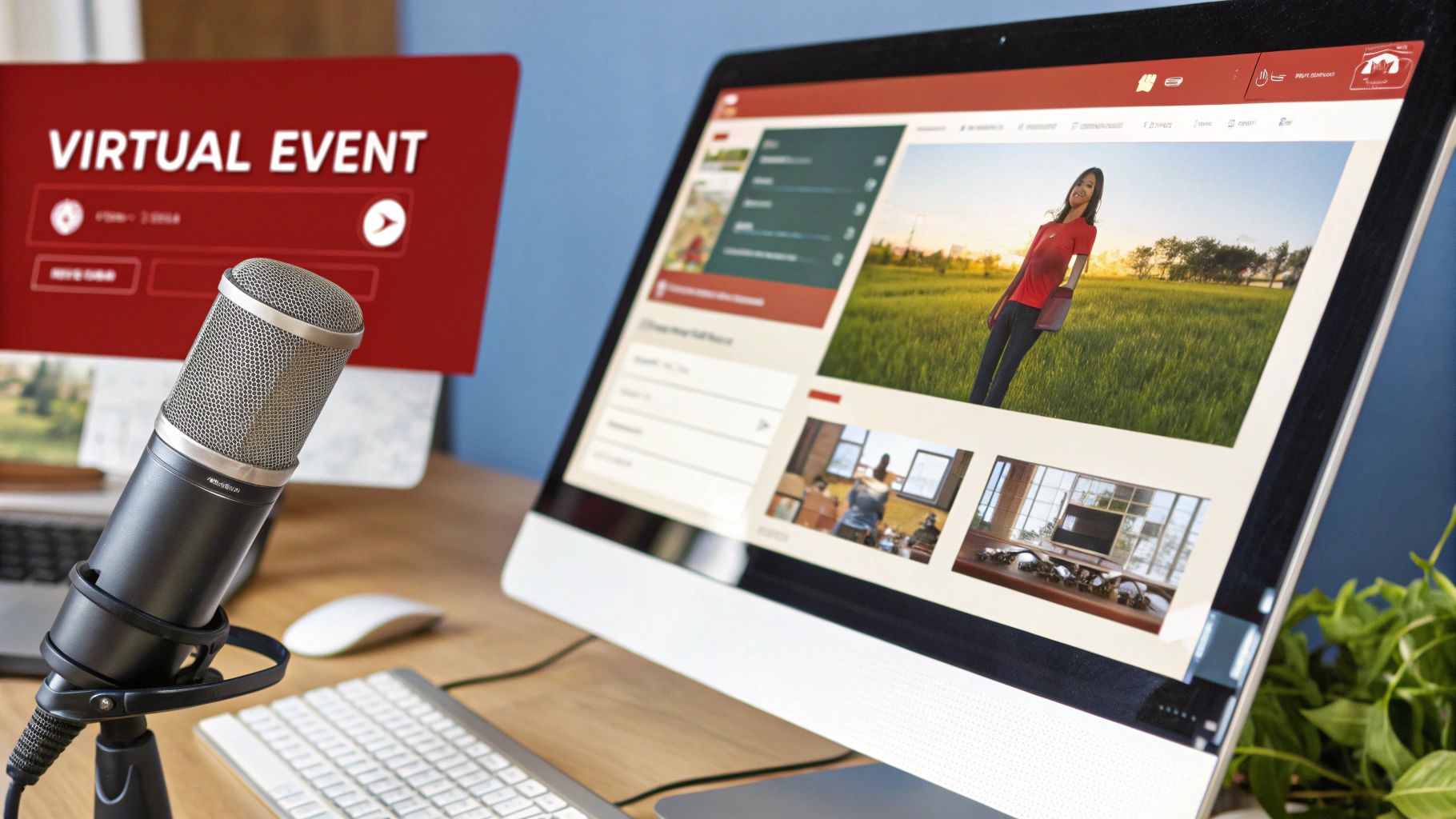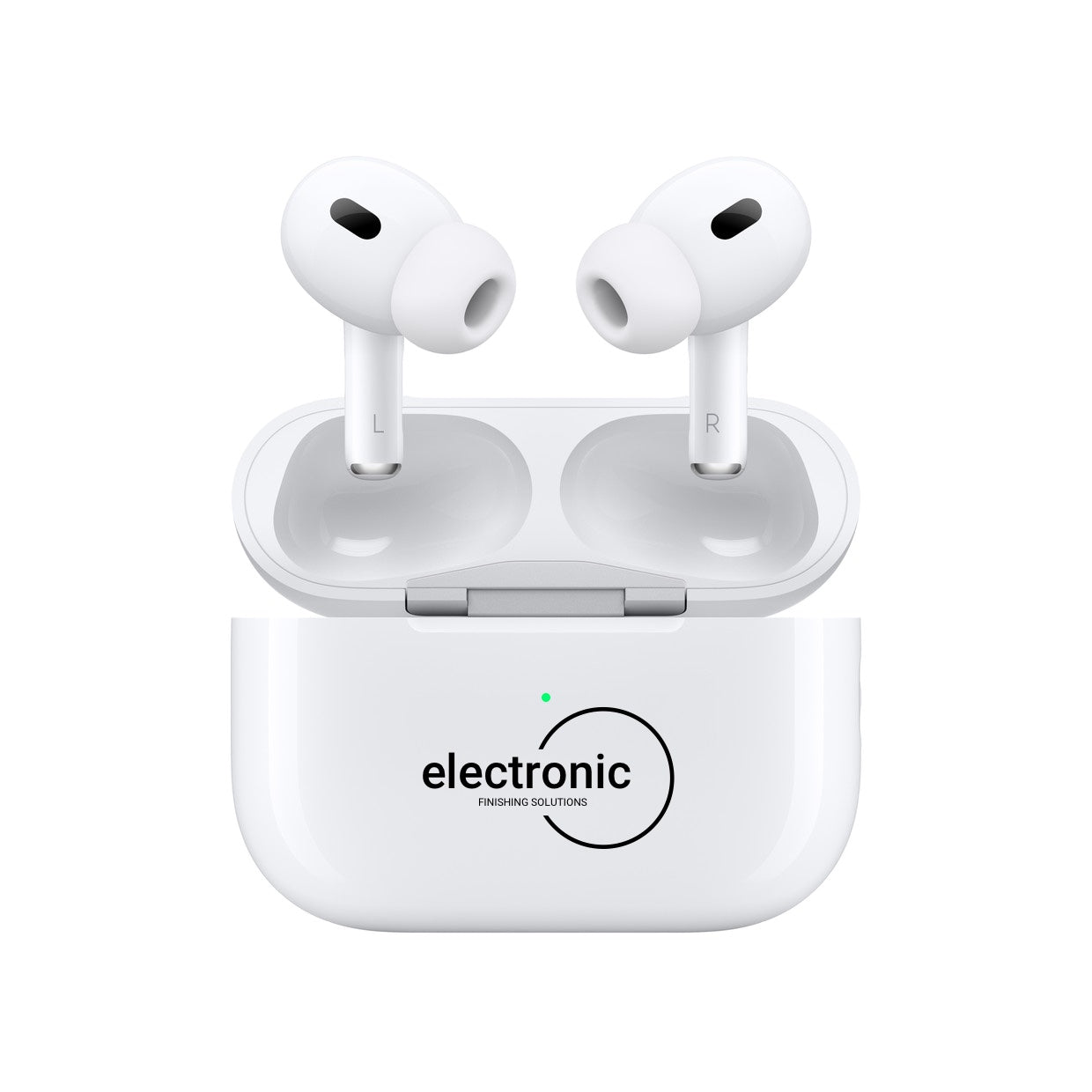Getting Started
Generating high-quality B2B leads is crucial for sustainable business growth. This curated list of ten actionable B2B lead generation strategies provides corporate marketing teams and tech startups with fresh perspectives and practical implementation details. Whether you're a Fortune 100 company or a burgeoning startup, understanding these core strategies will equip you to attract, engage, and convert potential clients effectively. To get started with B2B lead generation, it's important to understand various B2B lead generation strategies as highlighted by PlusVibe's insights on effective strategies for 2025.
This listicle goes beyond generic advice, providing specific tactics and real-world examples for each strategy. You’ll learn how to:
- Maximize organic reach: Implement robust SEO strategies and leverage the power of content marketing.
- Harness the potential of social media: Develop effective LinkedIn outreach campaigns and social selling techniques.
- Connect directly with prospects: Implement impactful email marketing nurture campaigns, cold outreach strategies, and targeted PPC advertising.
- Leverage industry events: Generate leads through webinars, virtual events, trade shows, and strategic account-based marketing.
- Build valuable partnerships: Develop effective referral and partner programs.
By implementing these strategies, you can build a robust lead generation pipeline, drive sales, and achieve sustainable business growth. This comprehensive overview covers diverse approaches to acquiring leads, ensuring there’s something valuable for every organization. Let’s dive in.
1. Content Marketing and Thought Leadership
Content marketing and thought leadership represent a powerful approach to B2B lead generation strategies. This strategy focuses on creating and sharing valuable, relevant content designed to attract and engage a clearly defined audience. Instead of directly promoting a product or service, it positions your company as a knowledgeable resource, drawing potential customers into your sales funnel by offering solutions to their challenges. This builds trust and credibility, ultimately driving conversions and long-term customer relationships.

Examples of Effective Content Marketing
Companies like HubSpot, Salesforce, and Slack have successfully leveraged content marketing. HubSpot's comprehensive marketing blog and free resources establish them as industry leaders. Salesforce's Trailhead educational platform provides valuable training, fostering a community around their products. Slack shares workplace productivity insights and research, further solidifying their expertise. Learn more about... related startup marketing strategies.
Actionable Tips for Content Marketing Success
- Focus on solving problems: Address the specific pain points your target audience faces.
- Repurpose content: Maximize reach by adapting content across various channels (blogs, social media, email newsletters, and webinars).
- Data-driven insights: Use original research and data to offer unique perspectives.
- Clear calls-to-action: Guide your audience towards the next step in the buyer's journey.
- Track and analyze: Monitor engagement metrics and lead attribution to optimize future content.
When and Why to Use Content Marketing
Content marketing is particularly effective for B2B companies with complex products or services requiring education and trust-building. It excels in long-term lead nurturing, fostering brand loyalty, and positioning your business as a go-to resource within your industry. This makes it ideal for both Fortune 100 companies seeking market dominance and tech startups aiming to establish a strong foothold.
2. LinkedIn Outreach and Social Selling
LinkedIn outreach and social selling represent a highly targeted approach to B2B lead generation strategies. This strategy leverages LinkedIn's vast professional network to identify, connect with, and nurture potential prospects. It combines relationship building with strategic content sharing and personalized outreach to generate qualified leads. This approach allows you to connect directly with decision-makers and build rapport within your target market, leveraging the world's largest professional social platform.
Examples of Effective LinkedIn Outreach
Companies like Salesforce, IBM, Adobe, and Microsoft have successfully integrated LinkedIn into their lead generation efforts. Salesforce utilizes a robust social selling program for their sales teams. IBM leverages employee advocacy to amplify reach and engagement on LinkedIn. Adobe shares thought leadership content to position themselves as industry experts. Microsoft uses LinkedIn for account-based marketing, targeting key accounts with personalized campaigns.
Actionable Tips for LinkedIn Success
- Personalize connection requests: Mention mutual connections or shared interests to increase acceptance rates.
- Engage with prospects' content: Share industry insights and comment meaningfully on their posts to build rapport.
- Leverage video: Use video messages for higher engagement and a more personal touch.
- Optimize your profile: Ensure your profile acts as a lead generation tool, showcasing your expertise and value proposition.
- Track and analyze: Monitor response rates and adjust messaging strategies based on data-driven insights.
When and Why to Use LinkedIn Outreach
LinkedIn outreach is particularly effective for B2B companies targeting specific demographics or industries. It excels in building relationships with key decision-makers, fostering personalized connections, and accelerating the sales cycle. This strategy proves valuable for both established corporations seeking to expand their network and tech startups aiming to connect with potential investors and early adopters.
3. Email Marketing and Nurture Campaigns
Email marketing and nurture campaigns represent a systematic approach to building relationships with potential B2B customers. This strategy involves creating automated sequences that educate prospects, address their pain points, and guide them through the buyer's journey. From initial awareness to purchase decision, targeted and personalized email communications play a crucial role in B2B lead generation strategies.

Examples of Effective Email Nurturing
Companies like Marketo, Constant Contact, and Pardot effectively leverage email nurturing. Marketo's campaigns for marketing automation showcase sophisticated segmentation and personalized messaging. Constant Contact provides streamlined email sequences for small businesses. Pardot offers robust B2B email automation workflows. ConvertKit also demonstrates successful creator-focused email marketing campaigns.
Actionable Tips for Email Marketing Success
- Segment your lists: Categorize based on industry, company size, and buyer stage for targeted messaging.
- Behavioral triggers: Implement triggers based on website activity or email engagement for more relevant communication.
- Compelling calls-to-action: Include clear and enticing calls-to-action in every email to guide prospects.
- Test and optimize: Experiment with send times and frequency to maximize engagement rates.
- Valuable content: Focus on providing valuable content that addresses audience needs, not just promotional material.
When and Why to Use Email Nurturing
Email nurturing is essential for B2B companies seeking to build strong relationships with prospects over time. It's particularly effective for complex sales cycles, allowing you to stay top-of-mind and guide potential customers through the decision-making process. This strategy is invaluable for both large corporations and tech startups seeking to convert leads into loyal customers.
4. Search Engine Optimization (SEO) and Organic Traffic
Search engine optimization (SEO) is a cornerstone of long-term B2B lead generation strategies. It focuses on improving your website's visibility in search engine results pages (SERPs). By targeting keywords your ideal customers use, you attract high-intent prospects actively seeking solutions like yours. This organic approach involves optimizing website content, technical elements, and building authority to drive qualified traffic.

Examples of Effective SEO
Companies like Ahrefs, Moz, Shopify, and Zoom effectively leverage SEO. Ahrefs ranks highly for competitive SEO tool keywords. Moz dominates local SEO for marketing software. Shopify uses content-driven SEO for e-commerce solutions. Zoom optimizes for video conferencing search terms. These examples demonstrate the power of targeted SEO strategies.
Actionable Tips for SEO Success
- Focus on long-tail keywords: Target specific phrases with commercial intent.
- Create resource pages: Develop comprehensive guides and resources.
- Optimize for local search: Target specific geographic areas if applicable.
- Build high-quality backlinks: Earn links from reputable industry publications. To enhance your email marketing efforts as part of your SEO strategy, explore how Hubspot Sales Automation improves lead management, according to Osher Digital.
- Improve page loading speeds: Regularly monitor and optimize website performance.
When and Why to Use SEO
SEO is essential for all B2B companies seeking sustainable, long-term lead generation. It's particularly effective for businesses with complex products or services requiring in-depth research. SEO builds credibility, drives targeted traffic, and establishes your brand as a trusted authority. This makes it crucial for both established corporations and emerging startups.
5. Webinars and Virtual Events
Webinars and virtual events represent an interactive approach to B2B lead generation strategies. This strategy centers around hosting online sessions like educational webinars, product demonstrations, or industry discussions to attract and engage potential customers. This format allows companies to showcase their expertise, demonstrate solutions, and build relationships with prospects in a more personal and interactive setting. By offering valuable insights and engaging with attendees directly, businesses can nurture leads and establish themselves as trusted advisors.
Examples of Effective Webinars and Virtual Events
Companies like Salesforce, HubSpot, Zoom, and Hootsuite have successfully utilized webinars and virtual events for lead generation. Salesforce's Trailhead Live offers educational webinars, while HubSpot provides marketing and sales training sessions. Zoom uses webinars for product demonstrations, and Hootsuite hosts social media marketing workshops. These examples demonstrate the versatility of this strategy across different industries and applications.
Actionable Tips for Webinar Success
- Targeted Topics: Choose topics that directly address the specific pain points of your target audience.
- Multi-Channel Promotion: Promote your webinars across various channels (email, social media, website) to maximize attendance.
- Interactive Engagement: Incorporate interactive elements such as polls, Q&A sessions, and live chats to boost engagement.
- Prompt Follow-Up: Follow up with attendees within 24 hours with relevant resources and personalized next steps.
- On-Demand Content: Record your sessions to offer on-demand viewing and extend your lead capture opportunities. Learn more about... virtual event engagement ideas.
When and Why to Use Webinars and Virtual Events
Webinars and virtual events are particularly effective for B2B companies seeking to engage with prospects in a more interactive format. This strategy is well-suited for educating potential customers about complex products or services, building thought leadership, and generating qualified leads. It's a valuable tool for both large corporations looking to expand their reach and startups trying to establish a strong presence within their target market.
6. Account-Based Marketing (ABM)
Account-Based Marketing (ABM) is a highly targeted B2B lead generation strategy. It focuses on identifying and pursuing specific high-value accounts rather than casting a wide net. This approach treats each target account as a market of one. ABM involves creating personalized marketing campaigns tailored to individual companies or decision-makers within those organizations. This personalized approach fosters stronger relationships and accelerates the sales cycle.
Examples of Effective ABM
Companies like Demandbase, Snowflake, and Terminus have effectively utilized ABM. Demandbase's platform empowers enterprise software companies to orchestrate targeted campaigns. Snowflake leverages personalized campaigns to engage Fortune 500 accounts. Terminus facilitates multi-channel ABM campaigns, optimizing outreach and engagement. 6sense uses AI-powered account identification and targeting to further enhance ABM precision.
Actionable Tips for ABM Success
- Start small: Begin by focusing on a small number of high-value target accounts to pilot your ABM strategy.
- Deep research: Thoroughly research each account to understand their specific challenges, needs, and key decision-makers.
- Personalized content: Create account-specific content and value propositions that resonate with the target account's unique circumstances.
- Multi-channel outreach: Coordinate your outreach across multiple touchpoints and channels (email, social media, direct mail, events) for a cohesive and impactful approach.
- Measure account engagement: Track and analyze account engagement metrics to gauge the effectiveness of your ABM campaigns.
When and Why to Use ABM
ABM excels when dealing with high-value accounts and complex sales cycles. It's particularly effective for B2B companies selling high-ticket products or services where personalized attention is crucial. ABM can significantly improve lead quality, shorten sales cycles, and increase deal size. This makes it an ideal b2b lead generation strategy for both established Fortune 100 companies and tech startups seeking to acquire key customers.
7. Referral and Partner Programs
Referral and partner programs represent a powerful relationship-based approach to B2B lead generation strategies. This strategy leverages the trust and influence of existing customers, business partners, and industry connections to generate new prospects. By tapping into pre-existing relationships, businesses can create warm leads with significantly higher conversion potential compared to cold outreach. This approach capitalizes on word-of-mouth marketing and formal referral systems to expand reach and drive growth.
Examples of Effective Referral Programs
Companies like Dropbox, Slack, Salesforce, and HubSpot have demonstrated the effectiveness of referral and partner programs. Dropbox's referral program fueled viral growth by incentivizing users to invite friends. Slack's partner ecosystem and integrations broadened their reach and market penetration. Salesforce's extensive partner network and AppExchange created a thriving marketplace. HubSpot's agency partner program and referral system generate a substantial portion of their new business. Learn more about... referral and partner programs and brand activation.
Actionable Tips for Referral Program Success
- Create clear incentive structures: Motivate referrals with compelling rewards for both the referrer and the referred customer.
- Provide partners with resources: Equip partners with marketing materials and training to effectively promote your offerings.
- Track and attribute referrals: Accurately track referrals to ensure proper compensation and identify successful partnerships.
- Maintain consistent communication: Regularly communicate with referral partners, providing updates and seeking feedback.
- Recognize top performers: Publicly celebrate and recognize top-performing referrers to foster engagement and motivation.
When and Why to Use Referral Programs
Referral and partner programs are particularly effective for B2B companies with established customer bases and strong industry connections. This strategy excels in generating high-quality leads, shortening sales cycles, and building brand advocacy. It's ideal for both established companies seeking to expand market share and startups aiming to rapidly acquire customers through trusted networks. This makes it a vital component of any comprehensive b2b lead generation strategies plan.
8. Pay-Per-Click (PPC) Advertising
Pay-per-click (PPC) advertising is a targeted digital advertising strategy vital for b2b lead generation strategies. It involves placing ads on search engines, social media platforms, and other websites to drive immediate traffic and leads. PPC allows B2B companies to bid on relevant keywords and specific demographics to reach prospects actively searching for solutions or fitting their ideal customer profile. This targeted approach ensures that your ads are shown to the most qualified potential customers, maximizing your return on investment.
Examples of Effective PPC Advertising
Salesforce leverages Google Ads campaigns for CRM software, targeting keywords like "customer relationship management" and "sales automation." Zoom utilizes LinkedIn advertising for video conferencing, focusing on professionals and businesses. Slack uses retargeting campaigns to re-engage trial users, and Mailchimp employs Facebook ads to target small businesses interested in marketing solutions. These examples highlight the versatility of PPC across various platforms.
Actionable Tips for PPC Success
- Focus on high-intent keywords: Target keywords with commercial value, indicating a strong purchase intent.
- Compelling ad copy: Address specific pain points and highlight the benefits of your product or service.
- Negative keywords: Filter out irrelevant traffic to improve campaign efficiency and reduce wasted ad spend.
- Optimized landing pages: Ensure mobile compatibility and fast loading speeds for a seamless user experience.
- Conversion tracking: Measure the true ROI of your campaigns by tracking conversions and attributing them to specific keywords and ads.
When and Why to Use PPC Advertising
PPC advertising is highly effective for generating immediate leads and driving targeted traffic to your website. It's particularly useful for B2B companies launching new products, promoting time-sensitive offers, or targeting specific niche markets. Whether you're a Fortune 100 company or a tech startup, PPC can provide a rapid boost to your lead generation efforts and accelerate your sales pipeline.
9. Trade Shows and Industry Events
Trade shows and industry events remain a powerful B2B lead generation strategy. This involves participating in conferences and networking events to connect with potential customers face-to-face. This direct interaction allows companies to demonstrate products, build relationships, and generate leads within a professional setting. This fosters trust and accelerates the sales cycle.
Examples of Effective Event Marketing
Companies like Salesforce, Oracle, Adobe, and Microsoft consistently leverage industry events. Salesforce's massive presence at Dreamforce, Oracle's comprehensive booths, Adobe's creative showcases, and Microsoft's product demonstrations exemplify successful event marketing. These companies utilize events to connect with key decision-makers and generate high-quality leads.
Actionable Tips for Event Success
- Pre-event planning: Research attendee lists and schedule meetings in advance. To maximize your return on investment, consider following the latest Google Ads best practices from Click Click Bang Bang.
- Engaging booth experiences: Create interactive displays and demonstrations to attract visitors.
- Lead capture: Train staff on qualification and data capture techniques.
- Rapid follow-up: Connect with leads within 48 hours of the event.
- Social media amplification: Utilize event hashtags and social media platforms to extend your reach.
When and Why to Use Event Marketing
Trade shows and industry events are particularly effective for B2B companies with tangible products or services that benefit from live demonstrations. This approach excels at building rapport, generating qualified leads, and accelerating the sales pipeline. This strategy benefits both established corporations seeking market dominance and startups aiming for rapid growth by providing a platform for direct engagement with a targeted audience.
10. Cold Outreach and Sales Development
Cold outreach and sales development represent a proactive B2B lead generation strategy. This involves directly contacting potential customers who haven't previously engaged with your company. Tactics include cold calling, emailing, and social media outreach. Success hinges on identifying ideal prospects, crafting compelling messages, and persistent follow-up to spark interest and secure meetings. This direct approach can quickly fill your sales pipeline, particularly in niche markets.
Examples of Effective Cold Outreach
Companies leverage various tools and techniques for effective cold outreach. Outreach.io provides a sales engagement platform to streamline the process. SalesLoft enables automated cold email and calling sequences. Gong.io offers AI-powered insights into sales conversations. ZoomInfo provides a comprehensive prospect database for targeted outreach. Learn more about... cold outreach and sales development, even potentially tying into conference giveaways as a follow-up strategy.
Actionable Tips for Cold Outreach Success
- Thorough Prospect Research: Understand your prospects' needs and pain points before reaching out.
- Personalized Messaging: Tailor messages to each prospect, highlighting specific value propositions.
- Multi-Channel Approach: Connect with prospects across various platforms (email, phone, social media).
- Continuous Optimization: Track response rates and refine your approach based on data.
- Relationship-Focused Approach: Prioritize building rapport over immediate sales.
When and Why to Use Cold Outreach
Cold outreach is particularly effective for B2B companies targeting specific demographics or industries. It allows for rapid lead generation and direct engagement with decision-makers. This strategy is valuable for both established companies seeking new market segments and startups needing to quickly build a customer base. It complements other b2b lead generation strategies by proactively identifying potential clients.
Top 10 B2B Lead Generation Strategies Comparison
| Strategy | Implementation Complexity 🔄 | Resource Requirements ⚡ | Expected Outcomes 📊 | Ideal Use Cases 💡 | Key Advantages ⭐ |
|---|---|---|---|---|---|
| Content Marketing and Thought Leadership | Medium – requires consistent quality content creation and expertise | Moderate – skilled writers, designers, research | Long-term brand authority, quality leads | Building brand trust, SEO growth, education-focused marketing | Builds trust, cost-effective, improves SEO |
| LinkedIn Outreach and Social Selling | Medium-High – personalized outreach and relationship management | Moderate – LinkedIn Premium, Sales Navigator | Qualified leads via direct prospect engagement | Targeted lead gen, relationship building on a professional network | Direct access to decision-makers, scalable relationships |
| Email Marketing and Nurture Campaigns | Medium – setup of automation, segmentation, and testing | Moderate – marketing automation tools, CRM integration | High ROI, scalable lead nurturing | Lead nurturing, delivering personalized content over time | High ROI, detailed tracking, scalable automation |
| Search Engine Optimization (SEO) and Organic Traffic | High – ongoing optimization, technical and content updates | Moderate – SEO experts, content creators, technical support | Long-term increase in highly qualified organic traffic | Attracting high-intent prospects via search | Cost-effective, builds credibility, long-lasting results |
| Webinars and Virtual Events | High – considerable planning and execution effort | High – platform tools, speakers, promotion resources | High-quality engaged leads, real-time interaction | Educating prospects, product demos, interactive engagement | Interactive lead gen, positions as expert, rich data insights |
| Account-Based Marketing (ABM) | High – requires detailed account research and coordination | High – research, content personalization, multi-channel outreach | Higher conversion rates, targeted account engagement | Sales and marketing alignment on key accounts | Personalized messaging, efficient resource use, clear ROI |
| Referral and Partner Programs | Medium – building and maintaining relationships | Low to Moderate – incentives, partner management | Warm high-quality leads via trusted sources | Leveraging existing networks and partnerships | High lead quality, lower acquisition cost, social proof |
| Pay-Per-Click (PPC) Advertising | Medium – campaign setup, monitoring, and optimization | High – ad spend, management tools, creative assets | Immediate traffic and lead acquisition | Quick lead generation, targeting by intent and demographics | Fast results, precise targeting, measurable ROI |
| Trade Shows and Industry Events | High – event participation logistics and staffing | High – booth costs, travel, materials, manpower | Direct face-to-face leads, brand presence | High-touch relationship building, product demos | Builds trust quickly, concentrated audience access |
| Cold Outreach and Sales Development | Medium-High – prospect research and multi-channel outreach | Moderate – CRM tools, list building, messaging resources | Variable results, immediate lead generation potential | Proactive lead gen targeting untapped prospects | Direct control over lead volume, quick feedback |
Final Thoughts
This comprehensive guide has explored ten powerful B2B lead generation strategies, each offering unique avenues to connect with your target audience. From leveraging the organic reach of content marketing and SEO to harnessing the precision of account-based marketing and paid advertising, a multifaceted approach is key to sustainable growth. We've examined the nuances of LinkedIn outreach, the enduring power of email nurture campaigns, and the potential of both virtual and in-person events. Furthermore, we've highlighted the importance of building strong referral programs and the strategic role of cold outreach in a comprehensive lead generation ecosystem.
Key Takeaways and Actionable Next Steps
Mastering these B2B lead generation strategies is crucial for driving consistent business growth, especially in competitive landscapes like those faced by Fortune 100 companies and agile tech startups. To solidify your understanding and begin implementing these strategies, consider the following:
- Prioritize your target audience: Define your ideal customer profile and tailor your strategies accordingly.
- Experiment and iterate: Not every strategy will yield immediate results. Continuously test and refine your approach based on data and feedback.
- Integrate your strategies: Create a cohesive system where different lead generation tactics complement and reinforce one another.
- Measure your success: Track key metrics like conversion rates, cost per lead, and return on investment to gauge the effectiveness of your efforts.
The Bigger Picture: Building Long-Term Value
Effective B2B lead generation is not simply about acquiring contacts; it's about building relationships and fostering long-term value. By implementing these strategies thoughtfully and consistently, you can establish a robust pipeline of qualified leads, nurture them through the sales funnel, and ultimately convert them into loyal customers. This sustained growth contributes directly to a stronger bottom line and a more resilient business.
By focusing on providing genuine value to your target audience and staying adaptable in a dynamic market, you can position your organization for continued success in the realm of B2B lead generation. Remember, the strategies outlined here are not just individual tactics, but interconnected components of a comprehensive growth engine.
Effective communication is paramount in every stage of B2B lead generation. Streamlining your processes, especially in manufacturing and related industries, can significantly enhance your ability to nurture leads and convert them into clients. Explore Electronic Finishing Solutions at Electronic Finishing Solutions to discover how their innovative solutions can optimize your operations and contribute to a more efficient lead nurturing process, ultimately boosting your B2B success.



